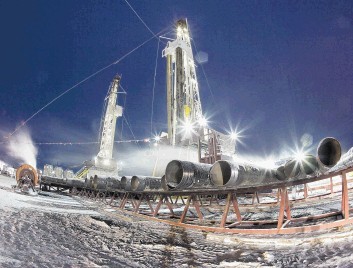
Last month at PETEX in London, the hunt for shale gas resources in the UK was a hot topic and among the companies offering their expertise and wares at the show was CGG, currently being stalked by fellow French group Technip, and US energy services giant Baker Hughes, which arch rival Halliburton ha made a $35billion bid for.
While companies such as these cannot easily answer the social and political questions, or indeed even wish to engage that way, they can contribute to the debate on technical feasibility and potential.
And both Baker and CGG are well equipped to do this.
Firstly, and according to CGG, we in Europe and not just the UK have the opportunity to benefit from the latest developments in North America. Integrated workflows, which bring together a broad range of geoscience data, have shown great potential for the comprehensive reservoir characterisation required to optimise drilling and completion activities in heterogeneous unconventional resource plays.
In 2012, CGG and Baker Hughes announced a strategic alliance to bring their complementary expertise together and develop these workflows. North American success with this approach suggests that early adoption could benefit the assessment of UK unconventional resources.
Secondly, there is existing data that can be tapped into.
There is a relatively good library of UK heritage data covering basins such as the Weald and Wessex as well as the Bowland Shale.
CGG Data Management Services, as data release agents for the Department of Energy & Climate Change (DECC) and with over 20 years of experience in the transformation of heritage data into modern digital assets, has provided a framework of high-quality data.
This was achieved by digitising, correcting and performing petrophysical and geomechanical rock property analysis on both UK offshore and onshore heritage data for wells intersecting the relevant geological formations.
Despite thousands of wells and decades of experience, inconsistent well performance is still an issue for operators in North America. Production can vary between wells drilled from the same pad, for example.
Gaining a better understanding of the subsurface based on multi-disciplinary expertise allows a more effective approach to shale development.
Seismic provides an understanding of what is happening spatially across a play. CGG says that recent programmes in the US provide the right balance of technology, survey parameters and cost to deliver datasets suitable for shale reservoir characterisation.
Many of the technologies developed such as broadband vibroseis, cableless recording and full-azimuth processing sequences, can be considered as best practice for productivity and data quality.
Continuous improvement has resulted in better seismic images and attributes to understand shale play heterogeneity, from fracture density to lithofacies.
New wells provide an opportunity to collect petrophysical and geomechanical information using the latest Baker Hughes formation evaluation techniques.
These can be used to calibrate the predictive models of reservoir quality and production potential generated from seismic attributes. However, less than 10% of the 15,000 horizontal wells drilled annually in the US are being logged.
CGG Robertson’s automated and quantitative mineralogy services, including its field-portable RoqSCAN system, can apparently fill this gap by providing measurement of the textural and mineralogical properties of the reservoir along the lateral section.
The analysis is performed on drilling cuttings and available core samples. This “hard data” provides a valuable constraint for reservoir models and can be used directly for geosteering applications as well.
Baker Hughes has an exclusive agreement with CGG for RoqSCAN, which they say is becoming increasingly popular with operators as a way to help them create more effective completion zonation schemes.
At the SPE Annual Conference in October a system known as PowerLog Frac was unveiled.
It is described as being “another piece in the strategic completion design puzzle” and is a joint development by CGG GeoSoftware and Baker Hughes for hydraulic stimulation design.
It allows engineers to quickly generate the rock and fluid property data used directly in fracture simulation software and test new scenarios on-site.
While the public debate in the UK is set to continue, it is clear that the industry can benefit from the latest technology, integrated workflows and experience gained in North America where operators are using these resources to help them:
-Identify production sweet spots
-Optimise well placement
-Optimise completion design
-Achieve better well performance
In the UK, we should also consider that this more effective and efficient approach could reduce demands on the environment and supply chain for resources such as water and proppant (material such as sand pumped below ground to hold open fractures).
Recommended for you
